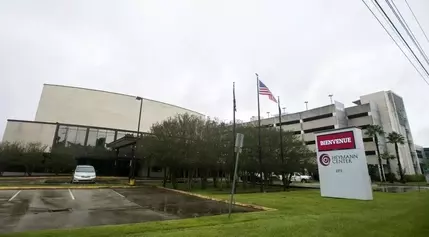The Heymann Performing Arts Center, a beloved yet aging landmark in Lafayette, stands at a crossroads. Built in the mid-20th century, this municipal building has long been a cornerstone for performing arts, hosting everything from symphony performances to community events. However, its deteriorating condition—ranging from leaky roofs and faulty plumbing to inaccessible facilities for wheelchair users—has raised concerns. Despite these challenges, stakeholders remain committed to preserving the Heymann as an affordable and accessible venue. A recent study explored various renovation and reconstruction options, with costs ranging from 0 million to 0 million. Ultimately, the study recommended further analysis rather than immediate action, leading to discussions about the best path forward for this vital community asset.
For decades, the Heymann Performing Arts Center has served as a hub for cultural activities in Lafayette. Designed by A. Hayes Town and completed in 1960, it has hosted countless events, from dance recitals and Mardi Gras balls to Broadway tours. Yet, its infrastructure is showing its age, with issues like slippery floors, broken seats, and outdated amenities. These problems not only affect user experience but also hinder the center's ability to attract high-profile productions. In response, a six-week feasibility study was conducted, exploring four main scenarios: renovating the existing structure, adding a smaller theater on-site before renovating, demolishing and rebuilding on the same property, or constructing a new center elsewhere. Each option comes with significant financial implications, ranging from approximately 0 million to 0 million, excluding additional exterior projects that could add another to million per scenario.
The renovation scenario would involve updating critical areas such as auditorium seating, bathrooms, HVAC systems, and audio-video equipment. It also proposes expanding the lobby and adding elevators, aiming to enhance accessibility and functionality. While this option offers the lowest initial cost, it could disrupt ongoing performances. Alternatively, building a smaller 800-seat theater on-site before renovating the existing building would allow performances to continue uninterrupted. This approach could provide better scalability for different types of events but would require more funding and space. Demolishing and rebuilding on the same property would offer a fresh design tailored to current needs, though it would be the most disruptive and expensive. Lastly, constructing a new center in a different location would preserve continuity at the existing site but would be the priciest option, not factoring in land acquisition costs.
Mayor-President Monique Boulet has expressed a preference for practical solutions over extensive studies. Her administration's first budget allocated million for essential renovations at the Heymann, signaling a commitment to maintaining the facility without embarking on a massive overhaul. Commissioners generally favor a scaled-down renovation project, with some advocating for the addition of an 800-seat theater to complement the existing 2,200-seat auditorium. Such a dual-theater setup could boost revenue and scheduling flexibility, particularly during peak seasons. As discussions continue, the community awaits further input through planned public meetings, ensuring that any future developments align with local priorities and needs.
Beyond the financial considerations, the Heymann Performing Arts Center holds sentimental value for many in Lafayette. Its history and versatility make it an integral part of the city's cultural fabric. While the road ahead may involve tough decisions and substantial investments, the consensus is clear: the Heymann must remain a vibrant and functional space for future generations. By balancing practicality with vision, Lafayette can ensure that this iconic venue continues to serve as a beacon for arts and culture in the region.

